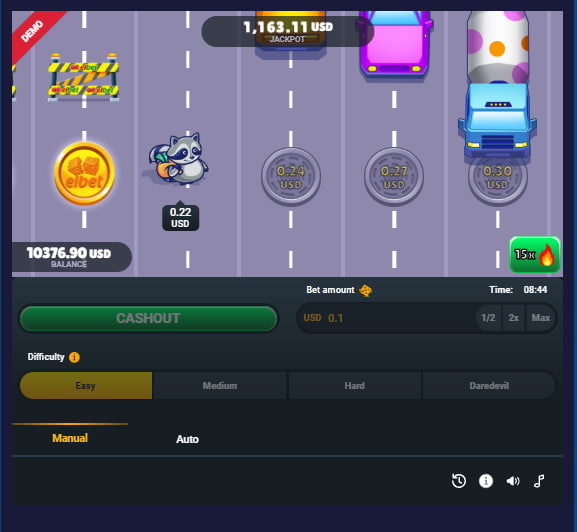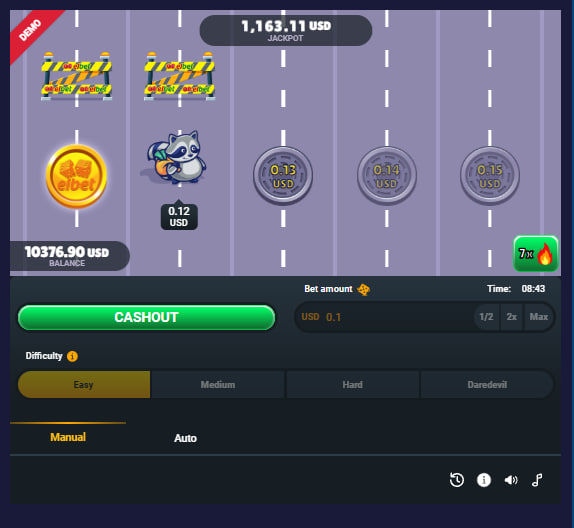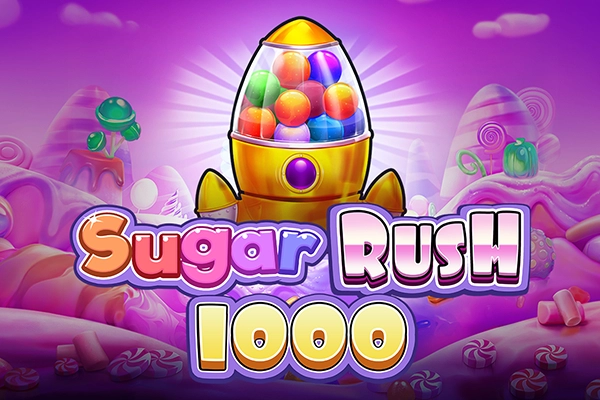Raccoon Rush by Elbet redefines slot gameplay by replacing reels with a high-stakes, five-lane highway. The game’s urban survival theme sets a tense atmosphere as players direct a raccoon across dangerous traffic. This is a crash game where the core mechanic involves securing a progressively increasing multiplier before a random crash event occurs. Players have direct control over the game’s volatility through four distinct difficulty settings, from Easy to Daredevil. With a high theoretical RTP of 97%, the game provides a solid statistical foundation for its mechanics. The main bonus feature is a compelling “must-hit-by” progressive jackpot, which introduces a community chase element. The experience is a pure test of nerve and strategic timing, demanding active participation rather than passive observation. This game is designed for players who appreciate direct control over risk and reward.
Raccoon Rush presents itself not as a conventional slot machine, but as a high-tension crash game built on a foundation of calculated risk. The game abandons spinning reels in favor of a five-lane highway, a grid that serves as the stage for its core conflict. The central figure, a cartoon raccoon, must navigate this perilous crossing. The visual style is deceptively simple and clean, reminiscent of modern mobile gaming applications. This aesthetic choice creates a stark contrast with the underlying pressure of the gameplay, which is a pure exercise in nerve and timing.

The game's theme is a modern interpretation of the classic arcade challenge, like a high-stakes digital version of Frogger. However, instead of just reaching the other side, the objective is financial gain. The raccoon's successful progression from one lane to the next directly builds a win multiplier. This design strips away the passive observation of spinning reels and places the outcome squarely on the player’s decision to continue or to secure their current winnings. It is a system predicated on the constant psychological battle between greed and caution.
Deconstructing the Core Gameplay & Risk Mechanics
The fundamental loop of Raccoon Rush is elegantly straightforward. A player sets a wager and initiates a round, sending the raccoon onto the first lane. Each safe crossing to a subsequent lane increases the multiplier, which is clearly displayed. The critical action rests with the player, who must use the “Cashout” button before a random “crash” event occurs—symbolized by the raccoon being struck by a vehicle. Successfully cashing out awards the bet multiplied by the achieved multiplier. Failing to do so results in the loss of the stake for that round.
What distinguishes this title from many other crash games is the implementation of adjustable Difficulty Levels: Easy, Medium, Hard, and Daredevil. This is not a superficial feature; it is the primary tool for player strategy and risk management. Selecting “Easy” presumably lowers the probability of a crash event on any given lane, allowing for more consistent, albeit smaller, multiplier progression. Conversely, the “Daredevil” setting substantially increases the risk for a potentially much faster and larger multiplier growth. This allows players to tailor the game's volatility to their own risk tolerance, a level of control rarely offered in games of chance.
A noteworthy psychological element is the Showdown feature. After a player cashes out, the game reveals the exact lane on which the crash event would have occurred. This feedback mechanism is designed to create a sense of “what if,” forcing a player to constantly re-evaluate their decisions. It can be both a source of relief for a timely cashout and a source of regret for a conservative one, adding a compelling layer to the repetitive nature of the gameplay loop.
The Function of On-Screen Elements
In Raccoon Rush, traditional symbols are replaced by functional on-screen components that provide critical information. The raccoon itself is the primary vessel for the accumulating multiplier. The asphalt lanes are marked with manhole covers, which serve as visual indicators for the multiplier value at each stage of the crossing. These elements are designed for clarity and rapid comprehension, essential in a game that demands split-second decision-making.
The user interface is minimalist and functional, prioritizing accessibility over elaborate design. The large, prominent “Cashout” button is the focal point, while bet adjustments and difficulty selection are positioned for easy access without distracting from the main action. This streamlined approach acknowledges the game's core nature: it is a performance-based system where player input is constant and decisive. The UI design facilitates, rather than hinders, this interaction.
Advanced Features: The Progressive Jackpot System
The most complex feature within Raccoon Rush is its progressive jackpot. This is not a randomly triggered prize but is tied directly to the core gameplay through a “must-hit-by” mechanic. A percentage of every wager contributes to the jackpot fund. After a jackpot is won, a new secret threshold value is randomly determined and encrypted.
Once the jackpot fund reaches this hidden value, the win condition is activated. On a subsequent game round for a random player, a jackpot symbol will appear on a specific lane of the highway. To win the jackpot, the player must successfully guide the raccoon to that designated lane without crashing. If the player cashes out before reaching the jackpot lane, the opportunity is lost, and the jackpot chance will be presented to another random player in a subsequent round. This “pass-the-torch” system continues until a player successfully reaches the target lane and claims the prize. This makes the jackpot a community-driven event where one player’s conservative play could become another's opportunity.

From an analytical perspective, the stated theoretical Return to Player (RTP) of 97% is a significant figure, placing it on the higher end for online casino games. This metric, combined with the adjustable difficulty, provides a framework for strategic play. Players can employ the Autoplay and Auto-Cashout features to execute specific strategies. For example, one could set a low auto-cashout multiplier on the “Easy” difficulty to attempt a low-volatility grinding strategy. Conversely, a high auto-cashout target on “Daredevil” represents a high-risk, high-reward approach.
With a wide betting range from $0.02 to $1,000 and a maximum payout of $10,000 per round, the game accommodates a broad spectrum of players. The core of its appeal is the agency it grants the user. Every round is a direct test of one's own risk assessment.













